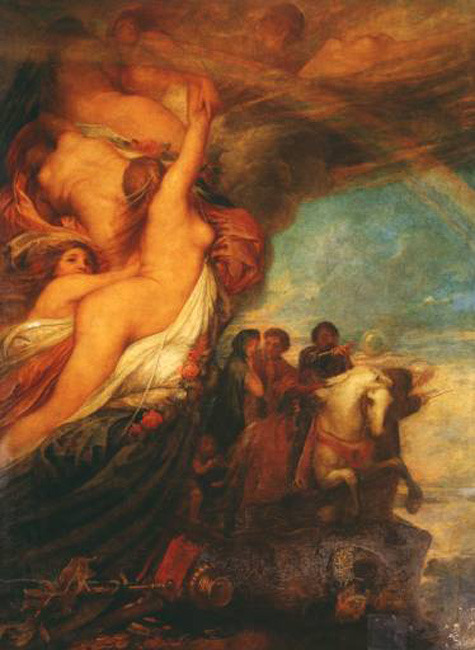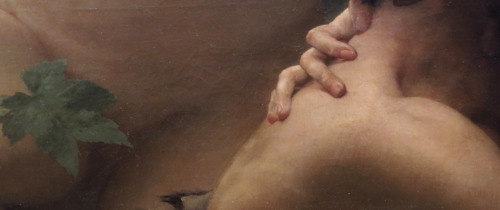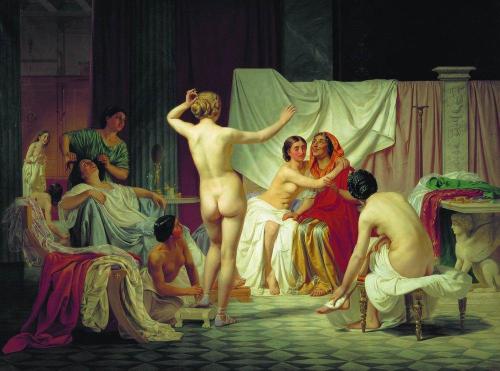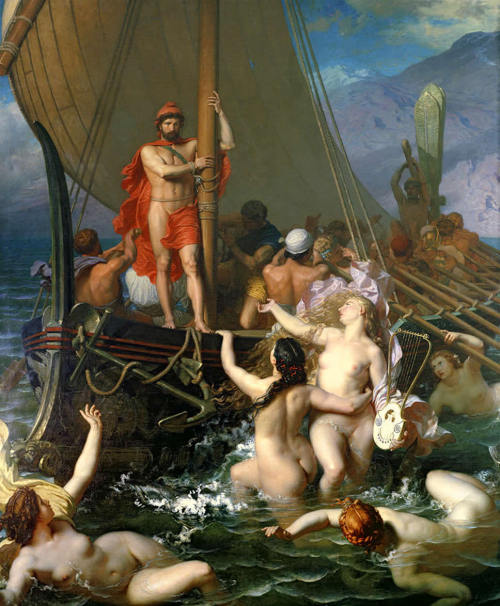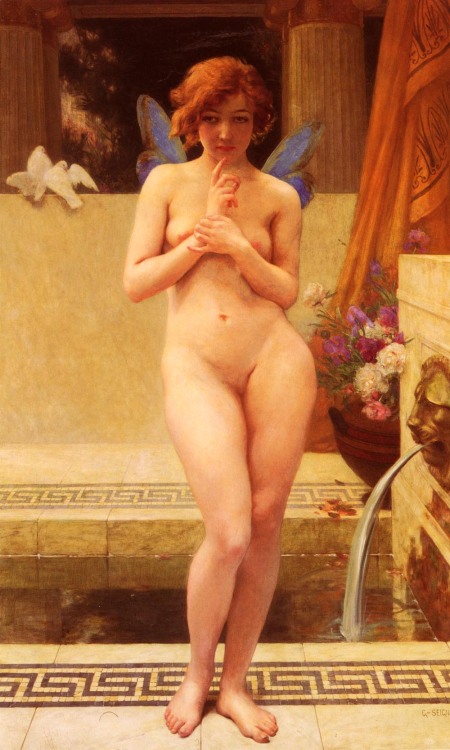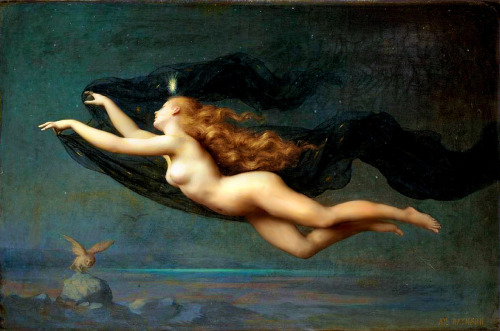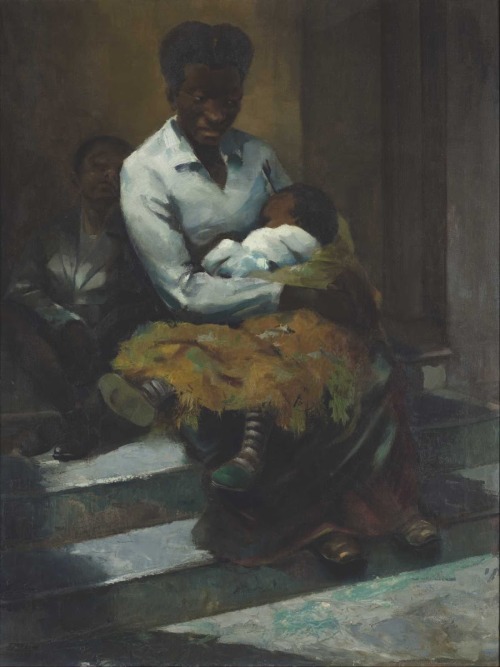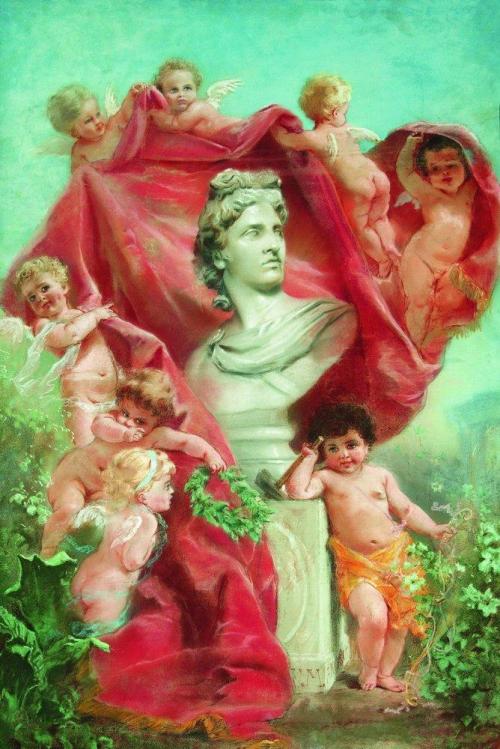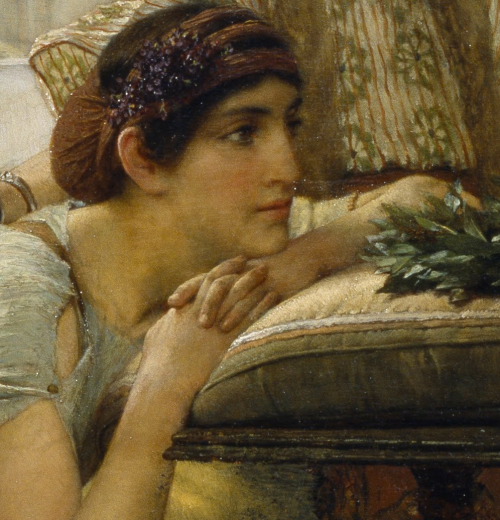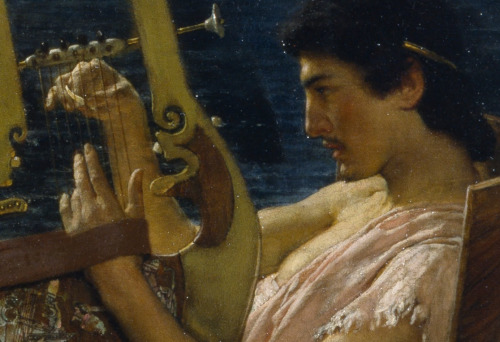#academicism
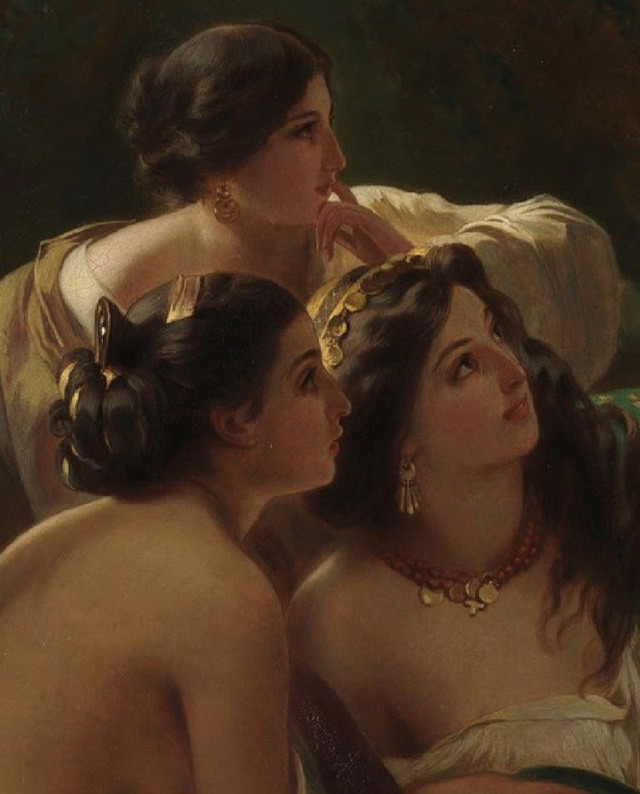
‘florinda’ (detail) - franz xaver winterhalter (1853)




‘angels with attributes of the passion’ - simon vouet (1624)




‘hypatia’ - julius kronberg (1889)
hypatia is not only famous for her academic feats, though they are impressive in themselves; she was the greatest mathematician and astronomer of her time, as well as the leader of the neoplatonist school of philosophy in alexandria. on top of this, she spectacularly overcame the profound sexism of her society. however, it’s likely that her death is more relevant to this painting - she suffered an unspeakably violent and cruel death at the hands of an ignorant christian mob of men. the terrified expression captured by kronberg could perhaps serve as foreshadowing to this event, as well as the small crucifix being paraded in the background. hypatia’s remains were burned in a mock of pagan sacrifice, her death marking the triumph of christianity over the paganism of the ancient world.




‘a view of santi giovanni e paolo from the back’ - christian jank (1833-1888)
this painting features the exterior of a building better known as san zanipolo. it’s decorated interior is highly impressive compared to the back of the church, which is only made of bricks. the significance of this piece is how jank transformed the subject by implementing a warm atmosphere, as well as the details; a man in a gondola, two women chatting, the statue of the winged lion of saint mark and the small dog on the stairs.

‘the awakening’ - solomon joseph solomon (1891)
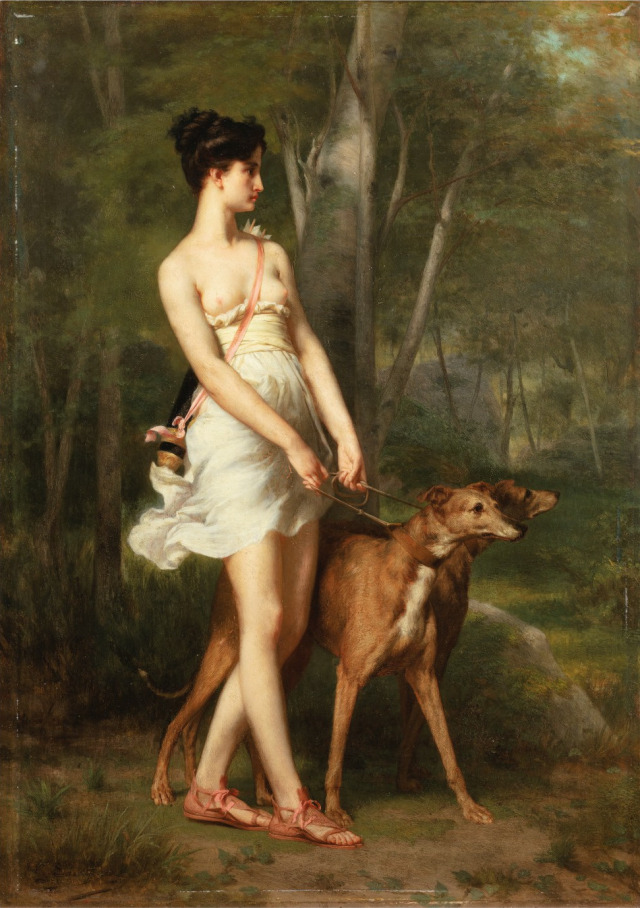

‘diana and a actaeon’ - gaston casimir saint-pierre (1833-1916)
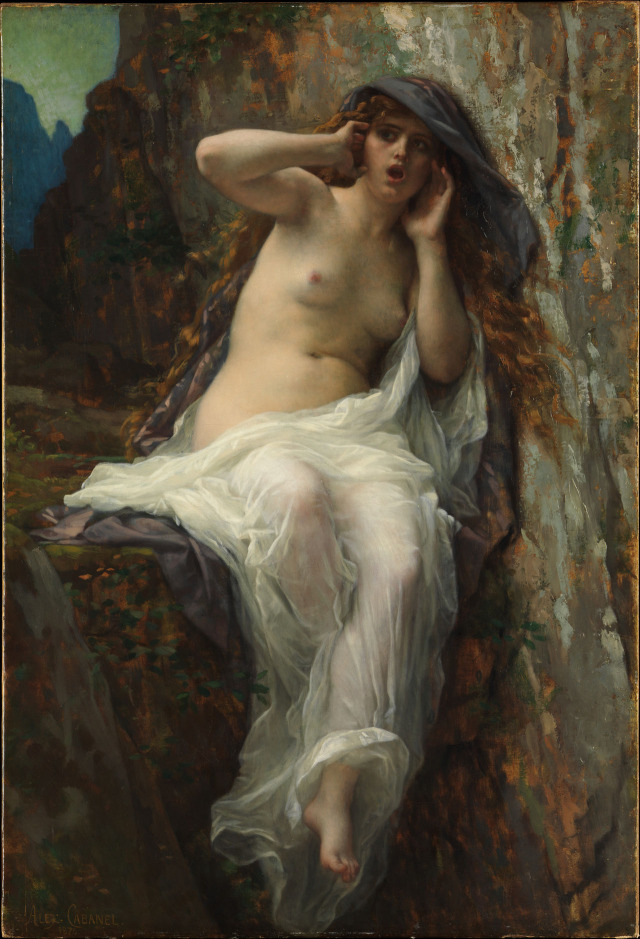
‘echo’ - alexandre cabanel (1887)

‘bacchus’ - jan van dalen (1648)

‘still life’ - david horn (1850s)
a classic example of vanitas, the objects in horn’s piece were carefully selected in order to portray a narrative on mortality; the jewels and luxurious fabrics can be used to criticise human vanity, with the skull, hourglass and broken violin reminding us of our inevitable fate: death.



‘reunion of odysseus and telemachus’ - henri-lucien doucet (1880)
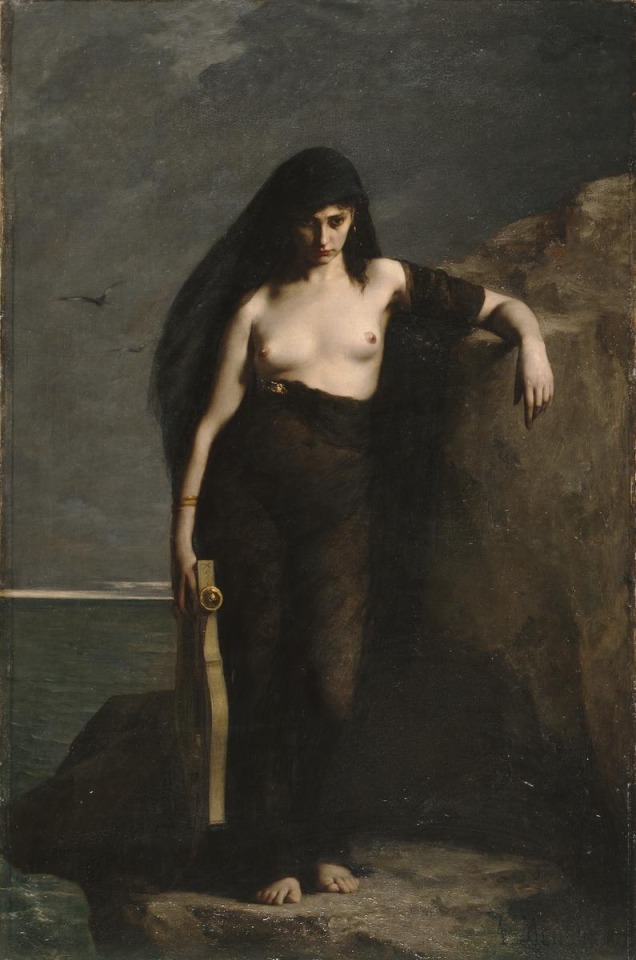
‘sappho’ - charles auguste mengin (1877)
ransacked to the waist, hounded under gales. of black hair, eyes burdened with longing, you are left behind, the lyre in your hand. fretted with the chords of the sea. - andrew miller



‘equality before death’ - william adolphe bouguereau (1848)

‘the farewell of telemachus and eucharis’ - jacques-louis david (1818)
in the 1699 french novel ‘les aventures de télémaque, loosely based on characters from the odyssey, the author fénelon describes how telemachus, the son of odysseus, fell passionately in love with the beautiful nymph eucharis. his duty as a son, however, required that he end their romance and depart in search of his missing father. this piece captures the ill-fated couple’s farewell. facing towards us, telemachus’s blue tunic falls open to reveal his naked torso. eucharis, seen in profile, encircles telemachus’s neck and gently rests her head upon his shoulder in resignation. In this way, jacques-louis david contrasts masculine rectitude with female emotion. source: the j paul getty museum.
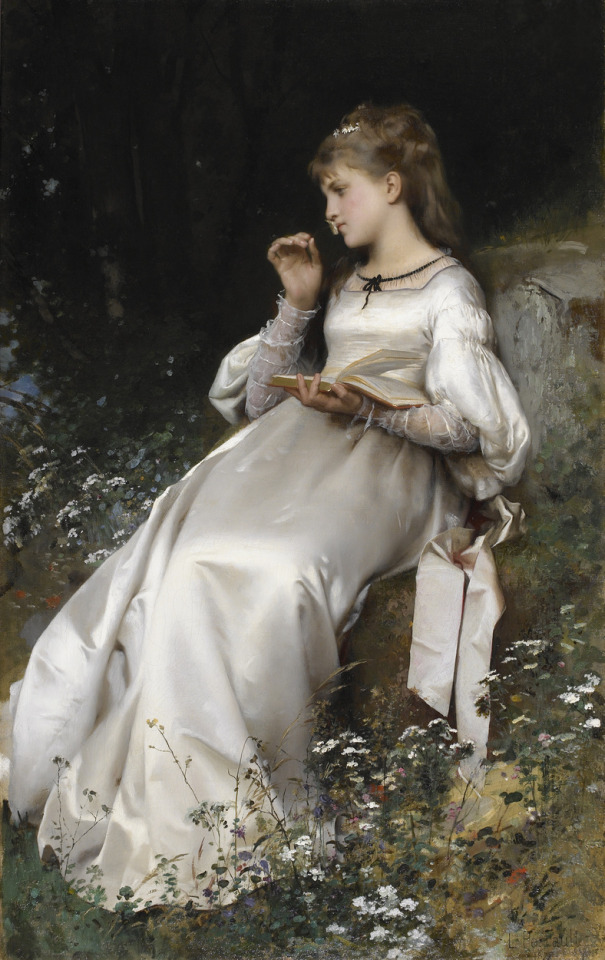
‘jeune fille lisant une lettre’- lèon bazile perrault (1877)
productivity looks different for everyone; you don’t have to complete 3 papers, write an essay and read an entire textbook every day to be productive. do what you feel you need, and don’t compare yourself to others.

Détail de « La tentation de Saint-Jérôme », par Henryk Hektor Siemiradzki (ca. 1886).
Detail of “The Temptation of St. Jerome”, by Henryk Hektor Siemiradzki (ca. 1886).
Christina Robertson, Portrait of Princess Maria Ivanovna Kochubey and Portrait of Olga-Ivanovna-Orlova-Davydova-(Baryatinsky)
Post link


